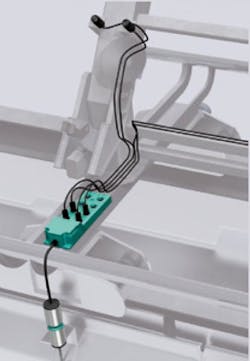Many sensors need to send power and control signals through barriers, between stationary and movable equipment, and over rotating or exchangeable machine sections.
Consider a conveyor that moves parts through an assembly plant. One common setup is to have trays (called carriers) on the conveyor containing parts needing work at various plant stations. When the conveyor parks a part-filled carrier at a given station, a robot jumps into action and performs a task on the parts. But first, controls must verify the parts are positioned properly. For this job, engineers often fix sensors to the carriers that send position confirmations to the controls.
Pepperl+Fuchs provided information for this column.
About the Author
Elisabeth Eitel
Elisabeth Eitel was a Senior Editor at Machine Design magazine until 2014. She has a B.S. in Mechanical Engineering from Fenn College at Cleveland State University.


